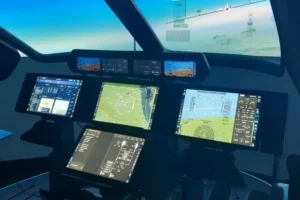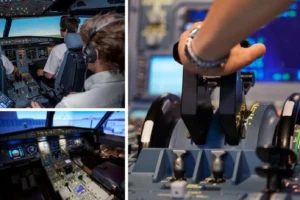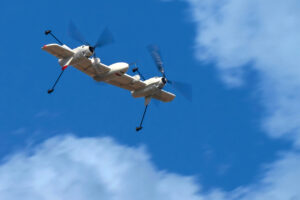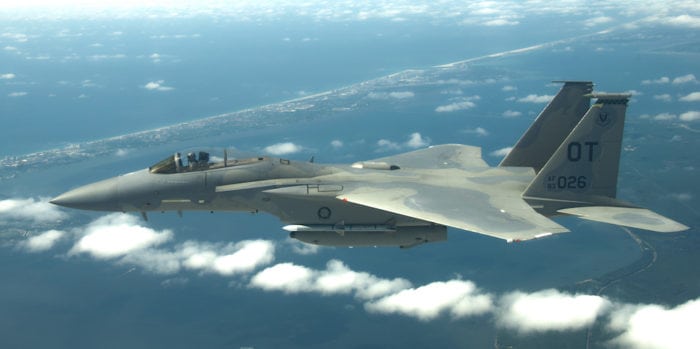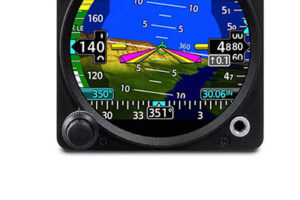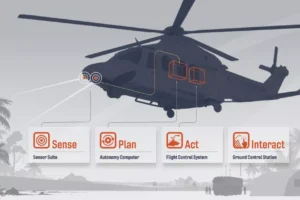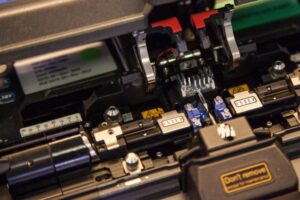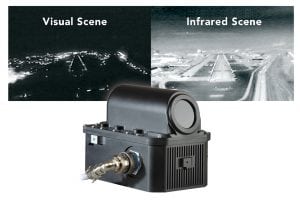The products built by the VAMs are tailored to a variety of airborne applications, with unit sizes ranging from 2 MCU (modular concept unit) to three-eighths ATR (air transport racking). The products weigh anywhere between 5 and 12 pounds (2.27 and 5.4 kg). Omnidirectional blade or patch antennas are normally installed, and the units handle voice and various types of data transmissions.
One major application for Iridium systems is for the tracking of government-owned or -contracted aircraft used in firefighting. Standardized systems, including an Iridium transceiver, antennas and optional GPS unit are used to automatically transmit an aircraft’s location, position and other information to the ground. Among the suppliers to the interagency program are Blue Sky Network and Sky Connect. Other units are being used on aircraft supporting the U.S. State Department’s drug eradication effort in Colombia.
World Airways, an air charter company, meanwhile, has installed Sky Connect satellite and data communications on the first of 12 of its MD-11s to provide crew members secure voice and data service. Using Sky Connect’s tracker system and software from Flight Explorer, the carrier’s dispatch center in Atlanta can see its aircraft worldwide.
Capstone
An aviation project that is demonstrating Iridium’s potential for remote area communications is FAA’s Alaska Capstone program. An FAA Free Flight 21 initiative, Capstone is evaluating the applicability and benefit of the automatic dependent surveillance-broadcast (ADS-B) concept to small, mainly single-engine, commercial operators in remote regions where communications often are poor, navigation frequently is challenging, and low-altitude, air traffic control (ATC) radar surveillance usually is non-existent.
Capstone aims to provide near-National Airspace System (NAS) quality services to Alaska’s remote regions. Participating aircraft carry special ADS-B transceivers which, once per second, transmit their GPS position plus their identification, course, speed, altitude and flight path over a common radio data link (see story on page 24). All other ADS-B-equipped aircraft within reception range receive this data, which then appears on the moving maps of their cockpit displays of traffic information (CDTIs). ADS-B thereby provides each pilot with a clear picture of all proximate aircraft.
Importantly, unmanned ground-based transceiver (GBT) stations spread throughout the operations area also receive the aircraft transmissions. The GBTs then retransmit this data via land lines, or microwave, or satellite links to the distant air route traffic control center (ARTCC), where the low-altitude movements are blended into the overall traffic picture. These links also allow the ARTCC to send local traffic and flight information back to the GBTs, which then retransmit it over the ADS-B frequency as traffic information service and flight information service broadcasts (TIS-B and FIS-B). TIS-B automatically adds the positions and movements of non-ADS-B-equipped aircraft to the Capstone pilots’ cockpit displays, while FIS-B provides pilots with weather reports and forecasts, notices to airmen (NOTAMs), pilot reports (PIREPs), and other important flight data. Endorsed by a recent International Civil Aviation Organization (ICAO) Air Navigation Conference as a key aviation safety technology for the future, ADS-B already is being implemented in projects along the U.S. East Coast, across Australia, in Europe and elsewhere.
ADS-B Complement
But Capstone has highlighted an unexpected ADS-B problem: when aircraft fly at low altitudes they lose line-of-sight communications contact with the GBT as they go behind intervening mountains or descend into valleys. Suddenly, the traffic awareness lifeline is severed, perhaps at a time when it is most needed.
Iridium shows promise of providing the vital continuous link. In March 2002 FAA and University of Alaska aviation officials, along with engineers from Iridium service provider, General Dynamics, flew proof-of-concept evaluation flights in a Cessna 180 along routes where terrain signal blocking would occur between the aircraft and the GBTs. The Cessna’s avionics package, which included an Iridium handheld telephone, simultaneously transmitted ADS-B data every second to a GBT via a UAT (universal access transceiver) communications link and to an Iridium satellite. Both tracks correlated closely on the air traffic controller’s screen (one in a line of red dots and the other of blue dots), until the GBT lost line-of-sight reception from the aircraft. But the Iridium track continued faultlessly, and the GBT track rejoined it when line-of-sight reception returned.
In early 2004, FAA awarded General Dynamics a $2-million contract to undertake more detailed flight evaluations. The agency will simultaneously conduct exacting assessments of Iridium’s integrity, reliability, availability and continuity.
Success in Capstone would represent a major step towards Iridium’s international aviation acceptance, in that it could bring about the system’s adoption as an ADS-B complement over remote and oceanic regions. In these regions, an aircraft’s ADS-B unit could provide its regular "squitters" to advise nearby aircraft of its location, and vice versa. But the lack of GBTs would preclude reception of TIS-B and FIS-B data and, conversely, preclude continuous tracking of the aircraft by distant ARTCCs. Iridium promises to fill that gap.
How Iridium Got its Name
Coming up with a name for an innovative communications satellite system can be a challenge. It first must be unique, yet easy to remember. And preferably it should not be too space- related, to avoid being hackneyed. It also must suggest a high degree of quality and performance. But Iridium’s name was not the product of late night brainstorming sessions. When the system concept was first conceived, it was planned to have 77 satellites. It was also learned that one of the Earth’s rare heavy metals, Iridium, has 77 electrons. Hence the name.
Subsequently, the constellation design was changed to today’s configuration of just 66 satellites. Perhaps wisely, the Iridium name was retained, even though another rare metal exists that has 66 electrons. But somehow, Dysprosium just hasn’t the same cachet.


